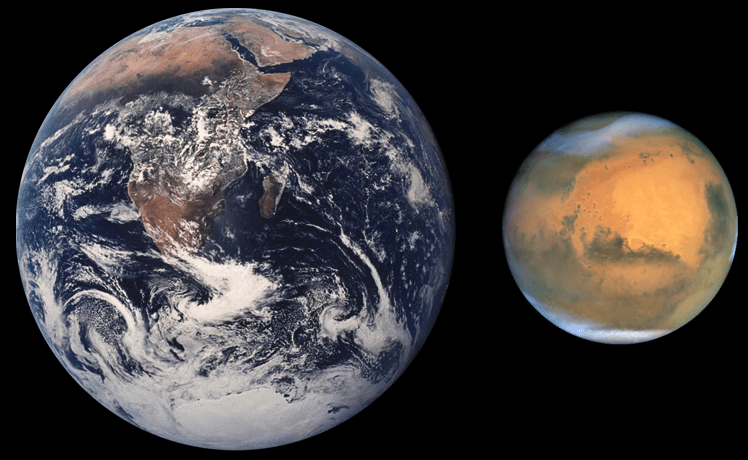Are Earthlings really Martians ?
Did life arise on Mars first and then journey on rocks to our planet and populate Earth billions of years ago? Earth and Mars are compared in size as they look today. NASA’s upcoming MAVEN Mars orbiter is aimed at answering key questions related to the habitability of Mars, its ancient atmosphere and where did all the water go.
Story updated[/caption]
Are Earthlings really Martians?
That’s the controversial theory proposed today (Aug. 29) by respected American chemist Professor Steven Benner during a presentation at the annual Goldschmidt Conference of geochemists being held in Florence, Italy. It’s based on new evidence uncovered by his research team and is sure to spark heated debate on the origin of life question.
Benner said the new scientific evidence “supports the long-debated theory that life on Earth may have started on Mars,” in a statement. Universe Today contacted Benner for further details and enlightenment.
“We have chemistry that (at least at the level of hypothesis) makes RNA prebiotically,” Benner told Universe Today. “AND IF you think that life began with RNA, THEN you place life’s origins on Mars.” Benner said he has experimental data as well.
First- How did ancient Mars life, if it ever even existed, reach Earth?
On rocks violently flung up from the Red Planet’s surface during mammoth collisions with asteroids or comets that then traveled millions of miles (kilometers) across interplanetary space to Earth – melting, heating and exploding violently before the remnants crashed into the solid or liquid surface.
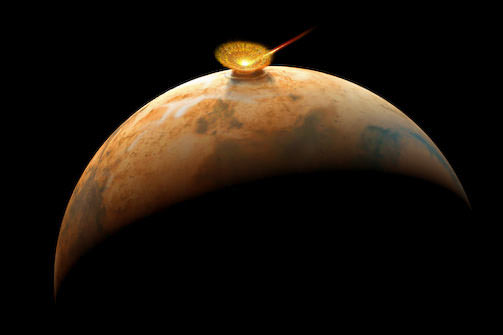
“The evidence seems to be building that we are actually all Martians; that life started on Mars and came to Earth on a rock,” says Benner, of The Westheimer Institute of Science and Technology in Florida. That theory is generally known as panspermia.
To date, about 120 Martian meteorites have been discovered on Earth.
And Benner explained that one needs to distinguish between habitability and the origin of life.
“The distinction is being made between habitability (where can life live) and origins (where might life have originated).”
NASA’s new Curiosity Mars rover was expressly dispatched to search for environmental conditions favorable to life and has already discovered a habitable zone on the Red Planet’s surface rocks barely half a year after touchdown inside Gale Crater.
Furthermore, NASA’s next Mars orbiter- named MAVEN – launches later this year and seeks to determine when Mars lost its atmosphere and water- key questions in the Origin of Life debate.
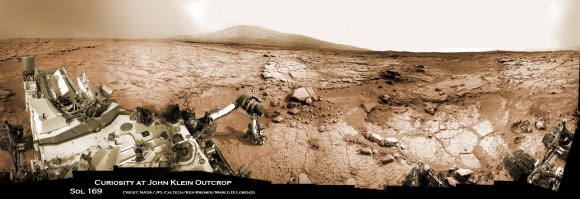
Of course the proposed chemistry leading to life is exceedingly complex and life has never been created from non-life in the lab.
The key new points here are that Benner believes the origin of life involves “deserts” and oxidized forms of the elements Boron (B) and Molybdenum (Mo), namely “borate and molybdate,” Benner told me.
“Life originated some 4 billion years ago ± 0.5 billon,” Benner stated.
He says that there are two paradoxes which make it difficult for scientists to understand how life could have started on Earth – involving organic tars and water.
Life as we know it is based on organic molecules, the chemistry of carbon and its compounds.
But just discovering the presence of organic compounds is not the equivalent of finding life. Nor is it sufficient for the creation of life.
And simply mixing organic compounds aimlessly in the lab and heating them leads to globs of useless tars, as every organic chemist and lab student knows.
Benner dubs that the ‘tar paradox’.
Although Curiosity has not yet discovered organic molecules on Mars, she is now speeding towards a towering 3 mile (5 km) high Martian mountain known as Mount Sharp.

Curiosity will ascend mysterious Mount Sharp and investigate the sedimentary layers searching for clues to the history and habitability of the Red Planet over billions of years. This mosaic was assembled from over 3 dozen Mastcam camera images taken on Sol 352 (Aug 2, 2013. Credit: NASA/JPL-Caltech/MSSS/ Marco Di Lorenzo/Ken Kremer-kenkremer.com
Upon arrival sometime next spring or summer, scientists will target the state of the art robot to investigate the lower sedimentary layers of Mount Sharp in search of clues to habitability and preserved organics that could shed light on the origin of life question and the presence of borates and molybdates.
It’s clear that many different catalysts were required for the origin of life. How much and their identity is a big part of Benner’s research focus.
“Certain elements seem able to control the propensity of organic materials to turn into tar, particularly boron and molybdenum, so we believe that minerals containing both were fundamental to life first starting,” says Benner in a statement. “Analysis of a Martian meteorite recently showed that there was boron on Mars; we now believe that the oxidized form of molybdenum was there too.”
The second paradox relates to water. He says that there was too much water covering the early Earth’s surface, thereby causing a struggle for life to survive. Not exactly the conventional wisdom.
“Not only would this have prevented sufficient concentrations of boron forming – it’s currently only found in very dry places like Death Valley – but water is corrosive to RNA, which scientists believe was the first genetic molecule to appear. Although there was water on Mars, it covered much smaller areas than on early Earth.”
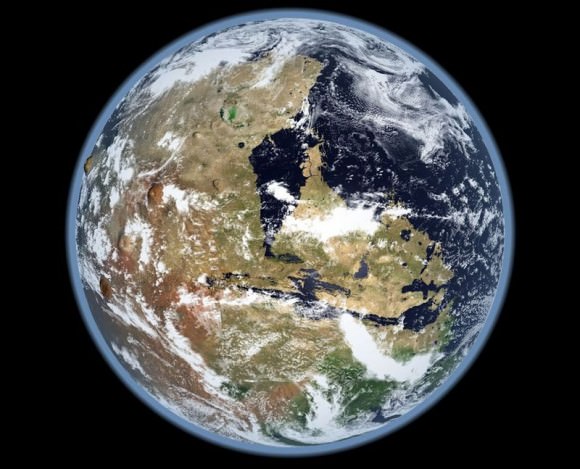
I asked Benner to add some context on the beneficial effects of deserts and oxidized boron and molybdenum.
“We have chemistry that (at least at the level of hypothesis) makes RNA prebiotically,” Benner explained to Universe Today.
“We require mineral species like borate (to capture organic species before they devolve to tar), molybdate (to arrange that material to give ribose), and deserts (to dry things out, to avoid the water problem).”
“Various geologists will not let us have these [borates and molybdates] on early Earth, but they will let us have them on Mars.”
“So IF you believe what the geologists are telling you about the structure of early Earth, AND you think that you need our chemistry to get RNA, AND IF you think that life began with RNA, THEN you place life’s origins on Mars,” Benner elaborated.
“The assembly of RNA building blocks is thermodynamically disfavored in water. We want a desert to get rid of the water intermittently.”
I asked Benner whether his lab has run experiments in support of his hypothesis and how much borate and molybdate are required.
“Yes, we have run many lab experiments. The borate is stoichiometric [meaning roughly equivalent to organics on a molar basis]; The molybdate is catalytic,” Benner responded.
“And borate has now been found in meteorites from Mars, that was reported about three months ago.
At his talk, Benner outlined some of the chemical reactions involved.
Although some scientists have invoked water, minerals and organics brought to ancient Earth by comets as a potential pathway to the origin of life, Benner thinks differently about the role of comets.
“Not comets, because comets do not have deserts, borate and molybdate,” Benner told Universe Today.
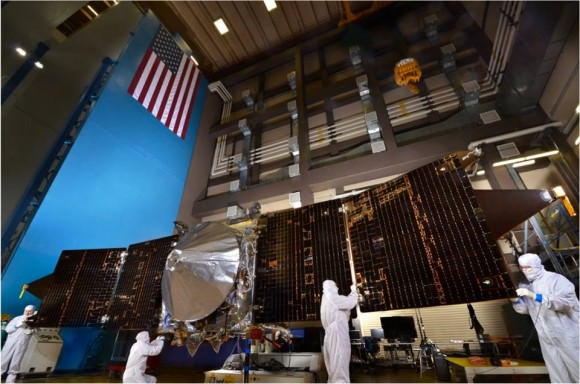
Benner has developed a logic tree outlining his proposal that life on Earth may have started on Mars.
“It explains how you get to the conclusion that life originated on Mars. As you can see from the tree, you can escape that conclusion by diverging from the logic path.”
Finally, Benner is not one who blindly accepts controversial proposals himself.
He was an early skeptic of the claims concerning arsenic based life announced a few years back at a NASA sponsored press conference, and also of the claims of Mars life discovered in the famous Mars meteorite known as ALH 84001.
“I am afraid that what we thought were fossils in ALH 84001 are not.”
The debate on whether Earthlings are really Martians will continue as science research progresses and until definitive proof is discovered and accepted by a consensus of the science community of Earthlings – whatever our origin.
On Nov. 18, NASA will launch its next mission to Mars – the MAVEN orbiter. Its aimed at studying the upper Martian atmosphere for the first time.
“MAVENS’s goal is determining the composition of the ancient Martian atmosphere and when it was lost, where did all the water go and how and when was it lost,” said Bruce Jakosky to Universe Today at a MAVEN conference at the University of Colorado- Boulder. Jakosky, of CU-Boulder, is the MAVEN Principal Investigator.
MAVEN will shed light on the habitability of Mars billions of years ago and provide insight on the origin of life questions and chemistry raised by Benner and others.
…………….
Learn more about Mars, the Origin of Life, LADEE, Cygnus, Antares, MAVEN, Orion, Mars rovers and more at Ken’s upcoming presentations
Sep 5/6/16/17: “LADEE Lunar & Antares/Cygnus ISS Rocket Launches from Virginia”; Rodeway Inn, Chincoteague, VA, 8 PM
Oct 3: “Curiosity, MAVEN and the Search for Life on Mars – (3-D)”, STAR Astronomy Club, Brookdale Community College & Monmouth Museum, Lincroft, NJ, 8 PM
Oct 9: “LADEE Lunar & Antares/Cygnus ISS Rocket Launches from Virginia”; Princeton University, Amateur Astronomers Assoc of Princeton (AAAP), Princeton, NJ, 8 PM

